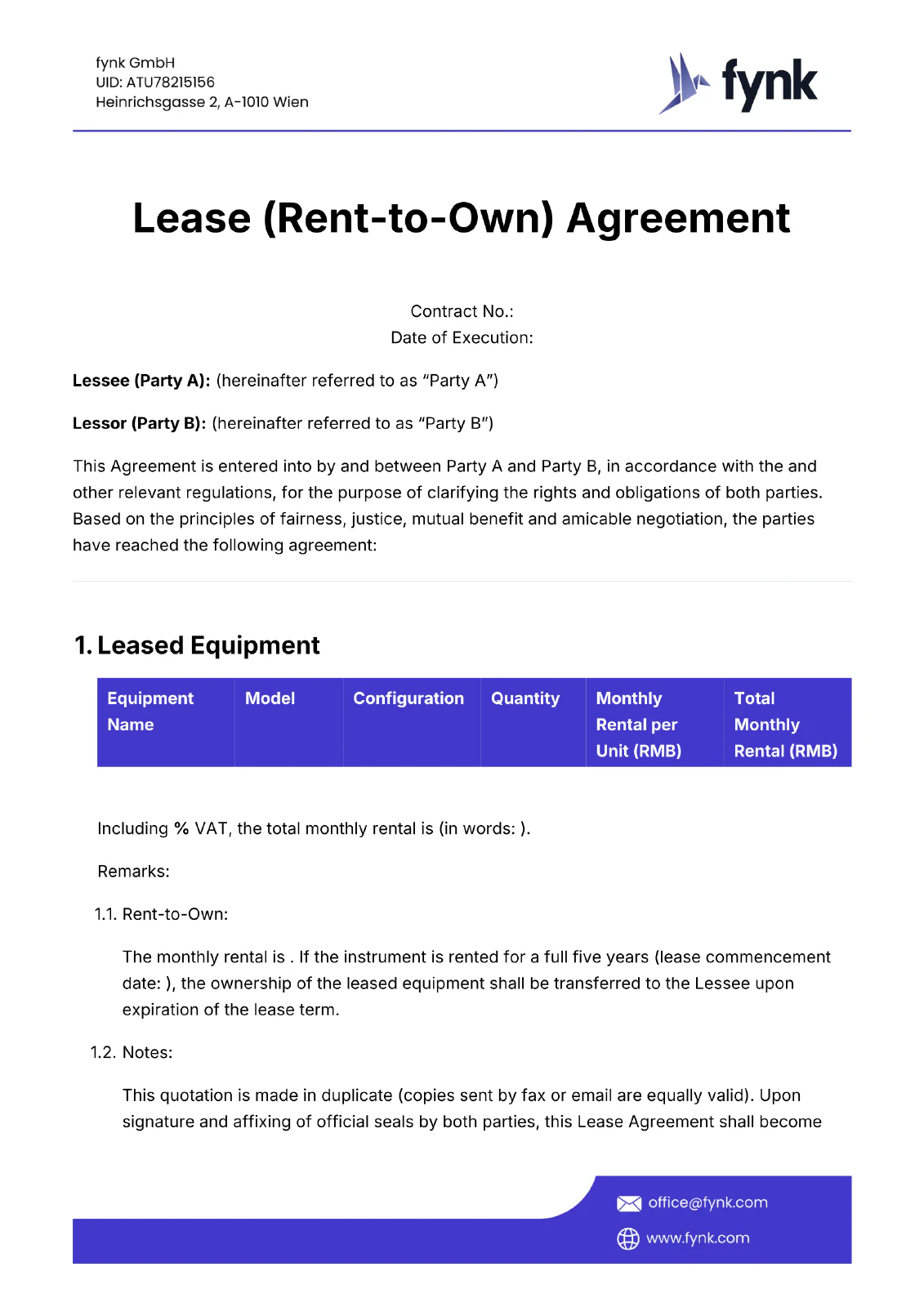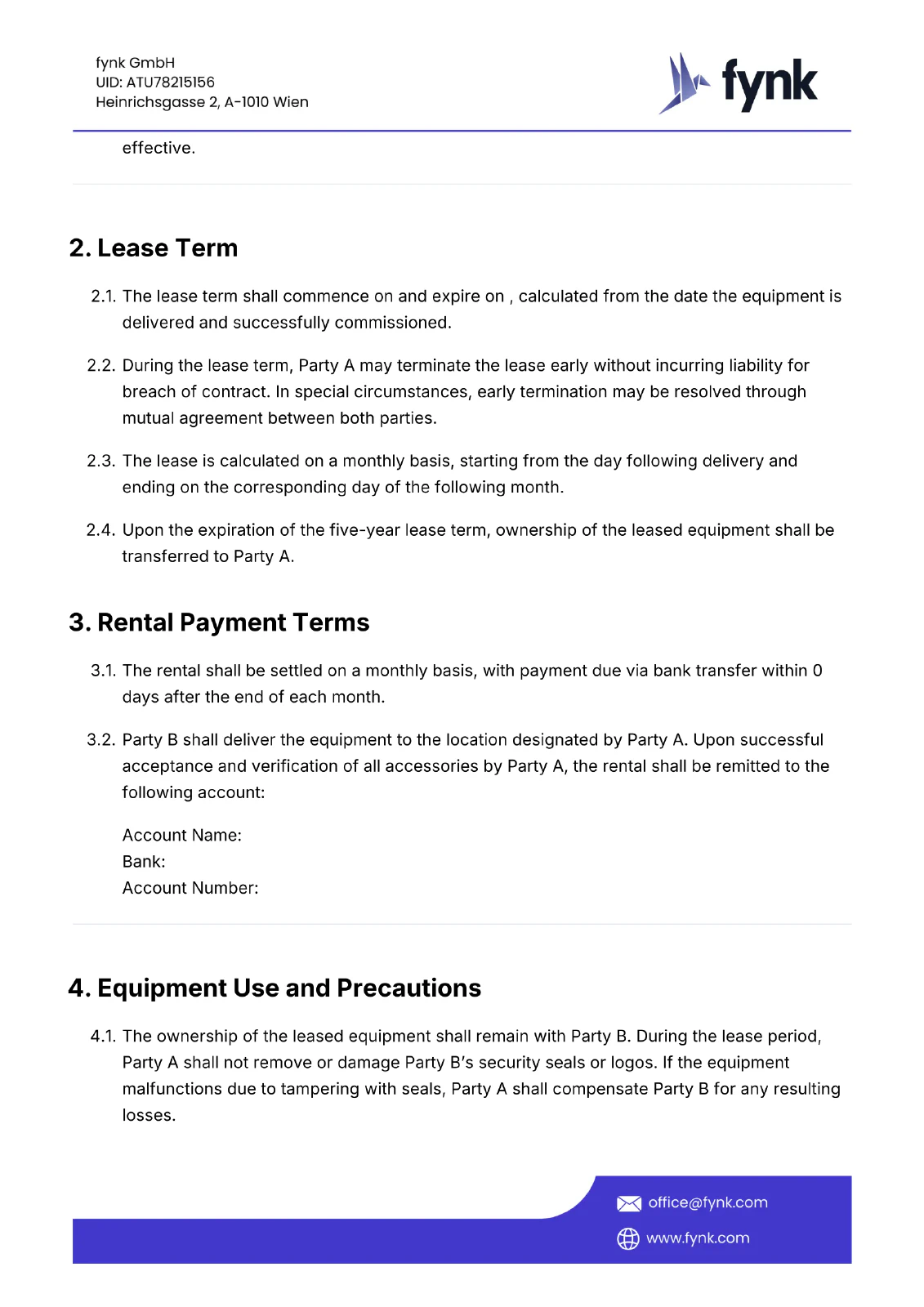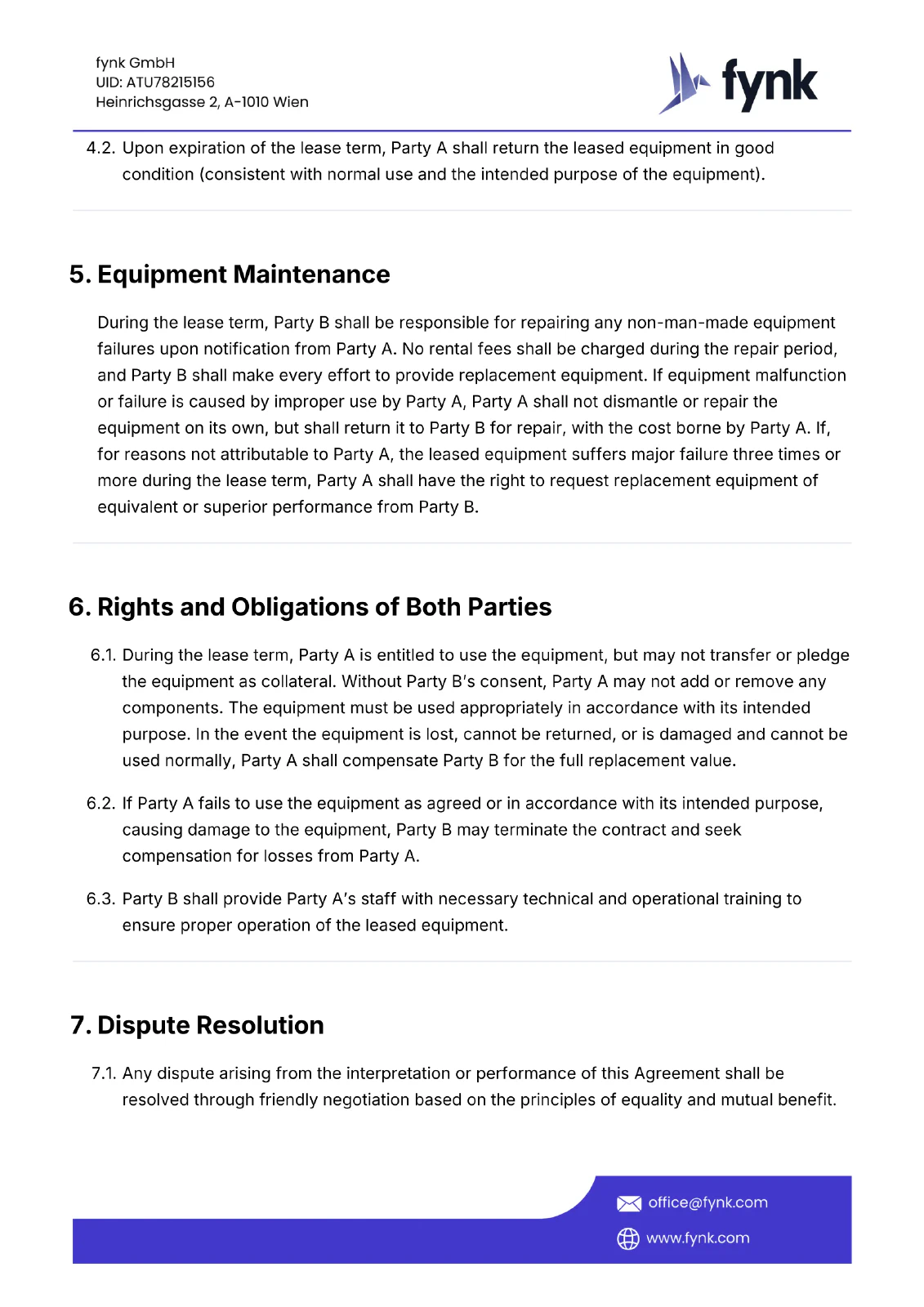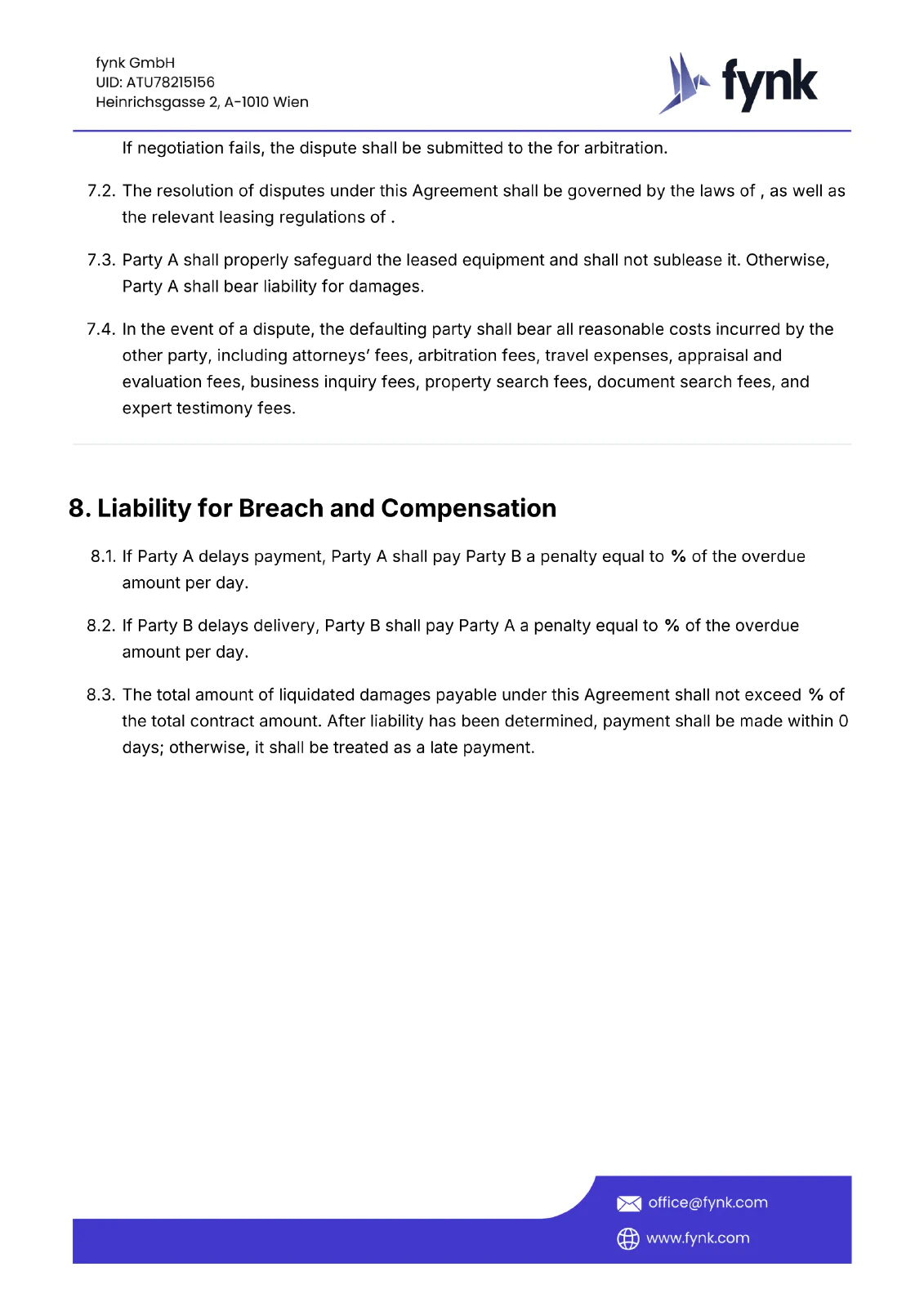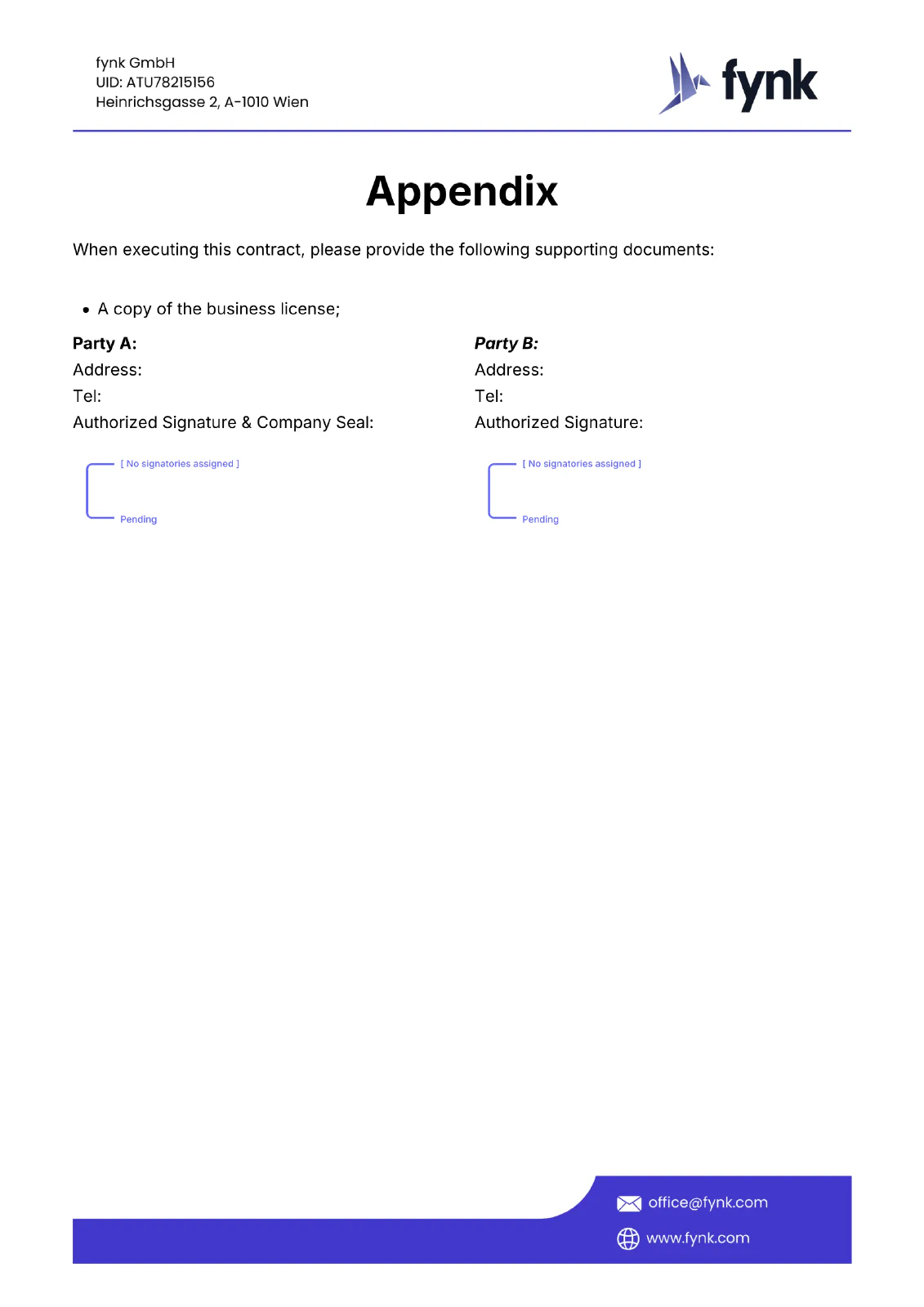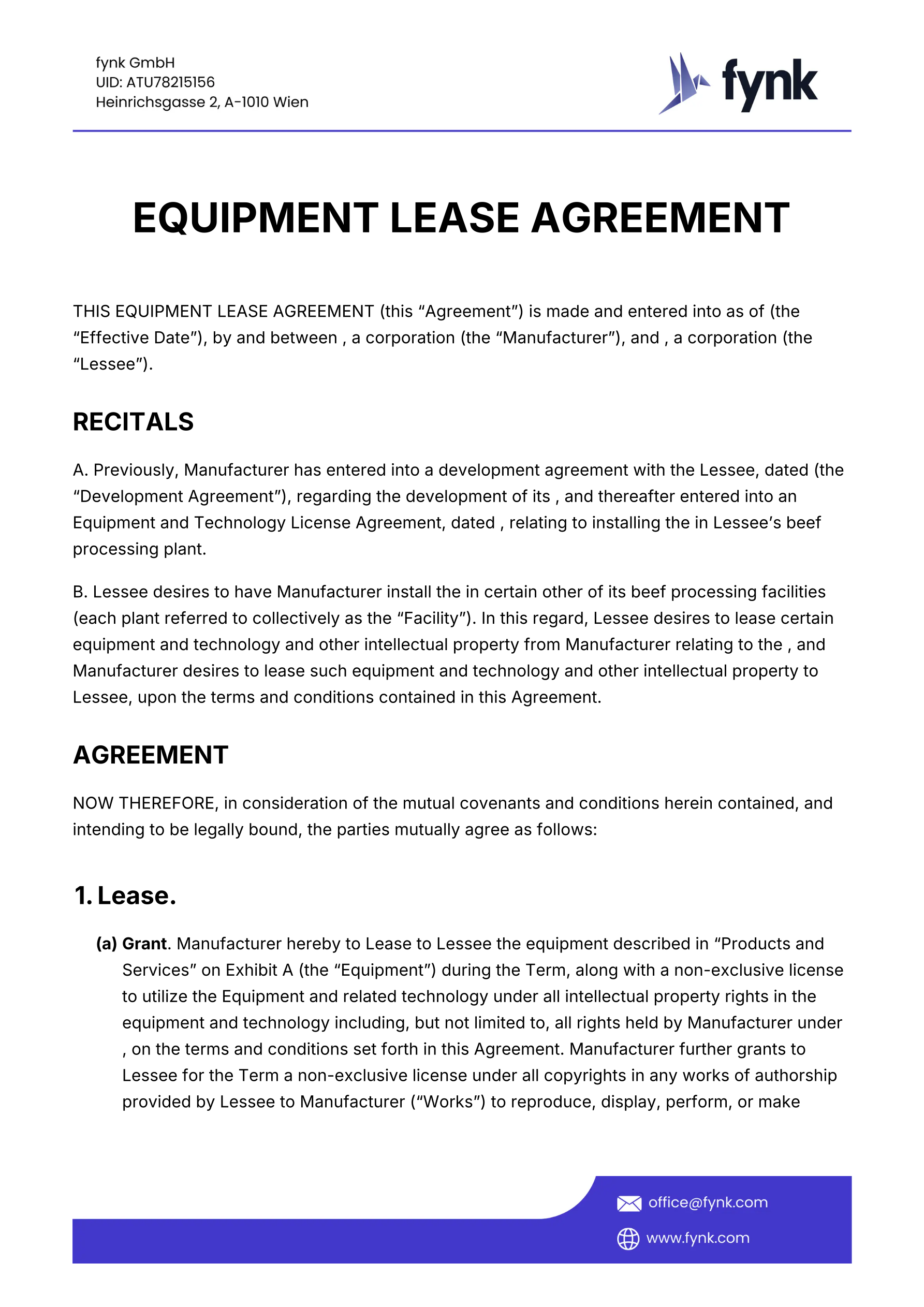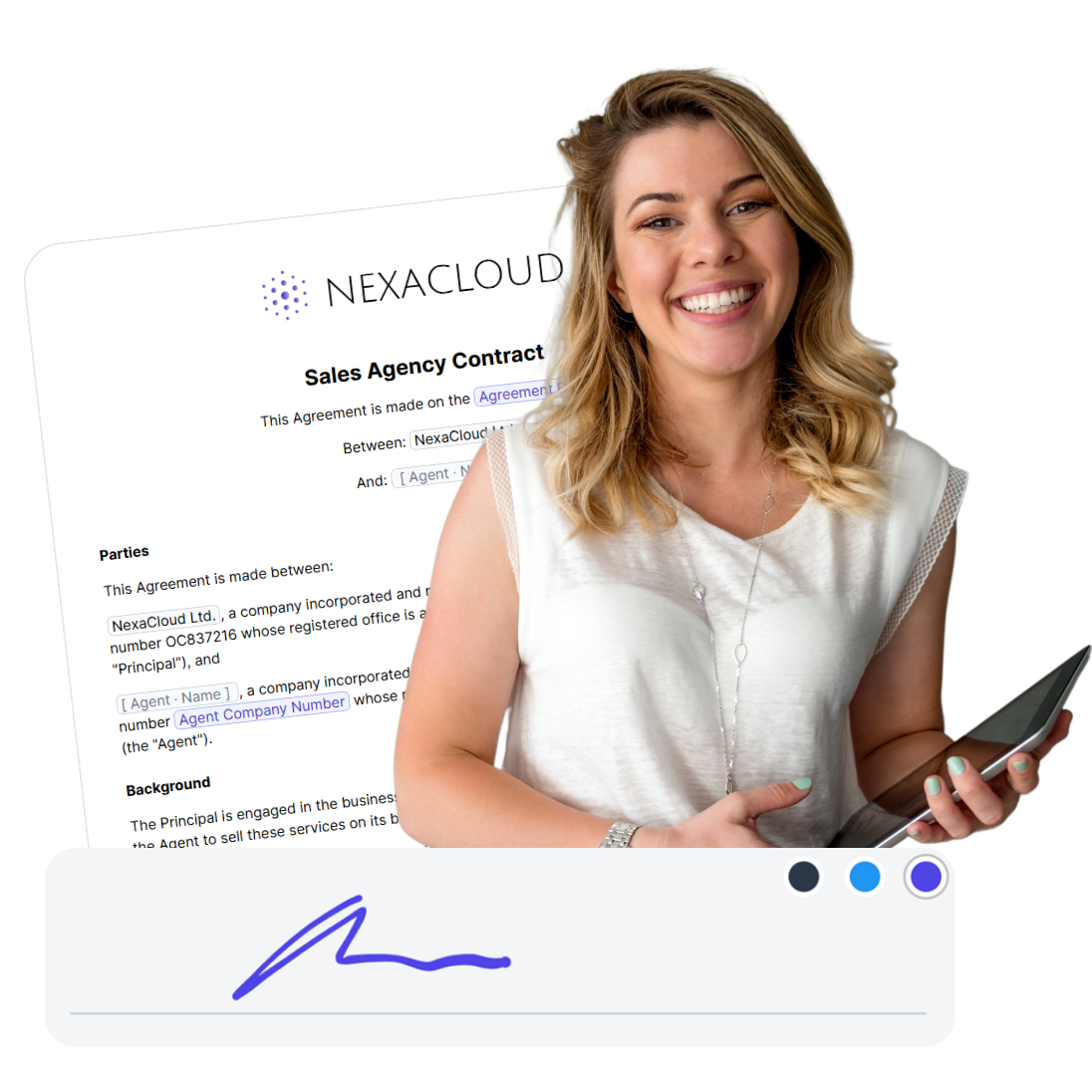Lease (Rent-to-Own) Agreement
Contract No.:
Date of Execution:
Lessee (Party A): (hereinafter referred to as “Party A”)
Lessor (Party B): (hereinafter referred to as “Party B”)
This Agreement is entered into by and between Party A and Party B, in accordance with the and other relevant regulations, for the purpose of clarifying the rights and obligations of both parties. Based on the principles of fairness, justice, mutual benefit and amicable negotiation, the parties have reached the following agreement:
Leased Equipment
Equipment Name | Model | Configuration | Quantity | Monthly Rental per Unit (RMB) | Total Monthly Rental (RMB) |
|---|---|---|---|---|---|
Including % VAT, the total monthly rental is (in words: ).
Remarks:
Rent-to-Own:
The monthly rental is . If the instrument is rented for a full five years (lease commencement date: ), the ownership of the leased equipment shall be transferred to the Lessee upon expiration of the lease term.
Notes:
This quotation is made in duplicate (copies sent by fax or email are equally valid). Upon signature and affixing of official seals by both parties, this Lease Agreement shall become effective.
Lease Term
The lease term shall commence on and expire on , calculated from the date the equipment is delivered and successfully commissioned.
During the lease term, Party A may terminate the lease early without incurring liability for breach of contract. In special circumstances, early termination may be resolved through mutual agreement between both parties.
The lease is calculated on a monthly basis, starting from the day following delivery and ending on the corresponding day of the following month.
Upon the expiration of the five-year lease term, ownership of the leased equipment shall be transferred to Party A.
Rental Payment Terms
The rental shall be settled on a monthly basis, with payment due via bank transfer within 0 days after the end of each month.
Party B shall deliver the equipment to the location designated by Party A. Upon successful acceptance and verification of all accessories by Party A, the rental shall be remitted to the following account:
Account Name:
Bank:
Account Number:
Equipment Use and Precautions
The ownership of the leased equipment shall remain with Party B. During the lease period, Party A shall not remove or damage Party B’s security seals or logos. If the equipment malfunctions due to tampering with seals, Party A shall compensate Party B for any resulting losses.
Upon expiration of the lease term, Party A shall return the leased equipment in good condition (consistent with normal use and the intended purpose of the equipment).
Equipment Maintenance
During the lease term, Party B shall be responsible for repairing any non-man-made equipment failures upon notification from Party A. No rental fees shall be charged during the repair period, and Party B shall make every effort to provide replacement equipment. If equipment malfunction or failure is caused by improper use by Party A, Party A shall not dismantle or repair the equipment on its own, but shall return it to Party B for repair, with the cost borne by Party A. If, for reasons not attributable to Party A, the leased equipment suffers major failure three times or more during the lease term, Party A shall have the right to request replacement equipment of equivalent or superior performance from Party B.
Rights and Obligations of Both Parties
During the lease term, Party A is entitled to use the equipment, but may not transfer or pledge the equipment as collateral. Without Party B’s consent, Party A may not add or remove any components. The equipment must be used appropriately in accordance with its intended purpose. In the event the equipment is lost, cannot be returned, or is damaged and cannot be used normally, Party A shall compensate Party B for the full replacement value.
If Party A fails to use the equipment as agreed or in accordance with its intended purpose, causing damage to the equipment, Party B may terminate the contract and seek compensation for losses from Party A.
Party B shall provide Party A’s staff with necessary technical and operational training to ensure proper operation of the leased equipment.
Dispute Resolution
Any dispute arising from the interpretation or performance of this Agreement shall be resolved through friendly negotiation based on the principles of equality and mutual benefit. If negotiation fails, the dispute shall be submitted to the for arbitration.
The resolution of disputes under this Agreement shall be governed by the laws of , as well as the relevant leasing regulations of .
Party A shall properly safeguard the leased equipment and shall not sublease it. Otherwise, Party A shall bear liability for damages.
In the event of a dispute, the defaulting party shall bear all reasonable costs incurred by the other party, including attorneys’ fees, arbitration fees, travel expenses, appraisal and evaluation fees, business inquiry fees, property search fees, document search fees, and expert testimony fees.
Liability for Breach and Compensation
If Party A delays payment, Party A shall pay Party B a penalty equal to % of the overdue amount per day.
If Party B delays delivery, Party B shall pay Party A a penalty equal to % of the overdue amount per day.
The total amount of liquidated damages payable under this Agreement shall not exceed % of the total contract amount. After liability has been determined, payment shall be made within 0 days; otherwise, it shall be treated as a late payment.
Appendix
When executing this contract, please provide the following supporting documents:
A copy of the business license;
Party A:
Address:
Tel:
Authorized Signature & Company Seal:
Party B:
Address:
Tel:
Authorized Signature:

